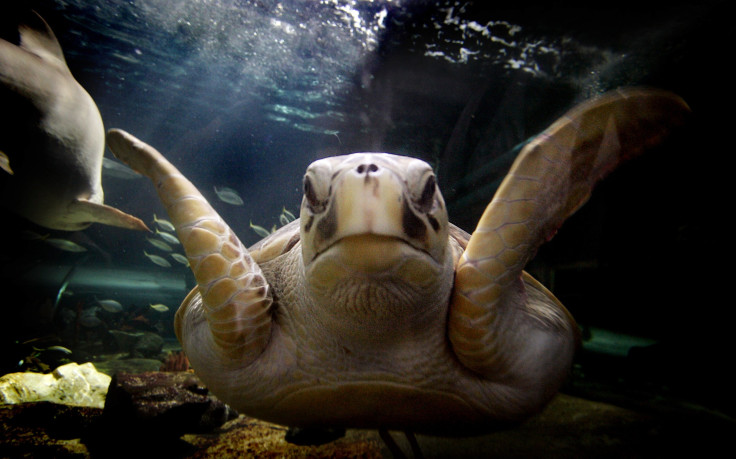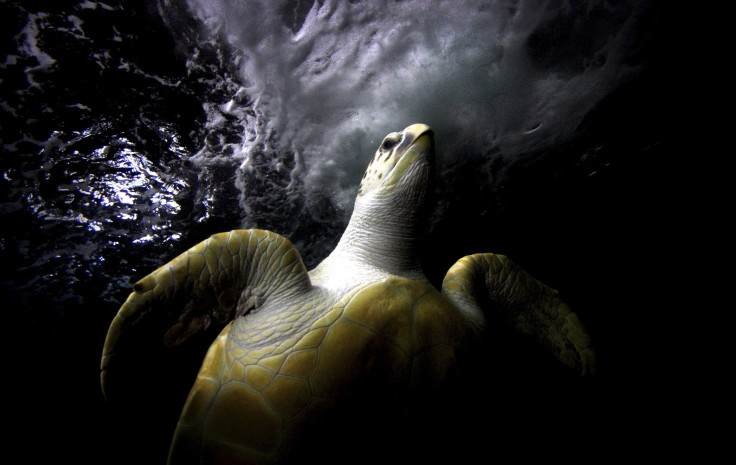Sea Turtle Camera Video Shows Leatherback's Journey Through Ocean

Wildlife officials have begun using small video cameras to assist vulnerable sea turtle populations. The so-called “turtle cams,” affixed to the shells of leatherback sea turtles, show the creatures’ journey through the ocean, diving for food and surfacing for air.
Leatherback sea turtles are listed as vulnerable with the International Union for the Conservation of Nature, but certain populations, like those in the Southwest Atlantic, are critically endangered. Because the turtles travel long distances across oceans, they frequently get tangled in long-line fishing nets. Sea turtles need to surface to breathe, so getting trapped in the nets often leads to death by drowning.
Read: Giant Green Sea Turtle Named Jolly, 50 Years Old And 330 Pounds, Released Back Into Ocean
Researchers at the Woods Hole Oceanographic Institute (WHOI) and the Massachusetts’s Division of Marine Fisheries said they hoped the cameras would be able to provide more insight into why the turtles get caught in the lines so often.
“A deeper understanding of leatherback behavior around this fishing gear will enable us to seek solutions to reduce or eliminate this threat,” said Barbara Schroeder, the National Oceanic and Atmospheric Administration Fisheries national sea turtle coordinator. “Not only in Massachusetts, but in other areas where trap lines entangle sea turtles.”
Leatherback turtle populations have declined in recent years due to entanglement, but also as a result of illegal egg collection, destroyed habitat and pollution. Some of the most massive of all sea turtle species, Leatherbacks rely on jellyfish as a primary source of food. The turtles often mistake plastic bags for jellyfish and, because they eat twice their weight each day and can’t digest plastic, die of starvation.
Developed by Woods Hole engineer Amy Kuklulya, the turtle cameras are equipped with acoustic and video capabilities and are attached to the creatures with a suction cup. An autonomous underwater vehicle (AUV) is released alongside it to communicate with the camera, follow the turtle and collect information on the surrounding environment.
“I’ve used all sorts of tagging and tracking technology with these animals, and the big difference here is that the AUV can continuously follow the turtle in three dimensions,” said Kara Dodge, a postdoctoral investigator at the WHOI and a co-leader of the study. “You’re getting a continuous underwater track, while simultaneously collecting video and environmental data.”
The study is still in a preliminary phase and researchers planned to use the cameras at least 10 more times during the summer.
“Anytime you put a video camera on an animal,” said Dodge, “you’re bound to get surprises.”

© Copyright IBTimes 2025. All rights reserved.






















